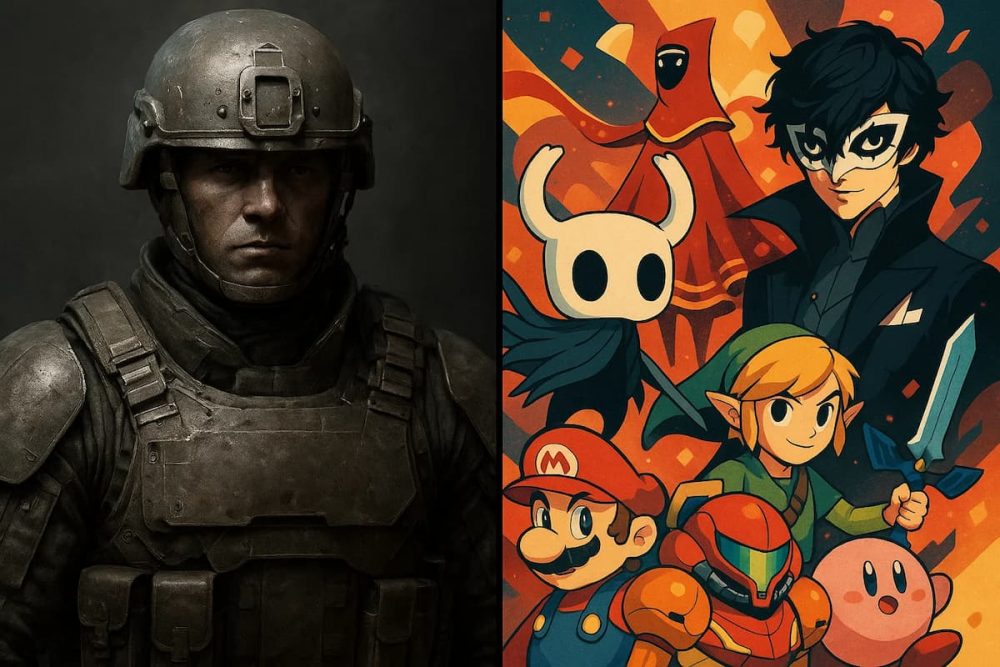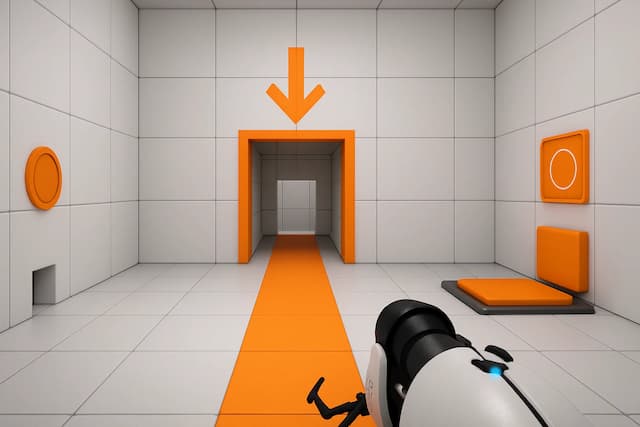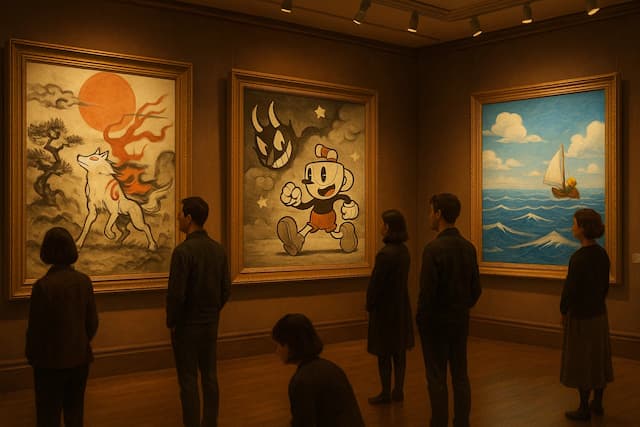Authenticity Over Graphics: Why Visual Spectacle Isn’t Enough

In the ever-evolving landscape of video games, it’s easy to be captivated by the latest technical marvel. A game launches with breathtaking, photorealistic landscapes, impossibly detailed character models, and cinematic flair that blurs the line between digital entertainment and reality. Yet, weeks later, this visual feast is often forgotten, its stunning veneer failing to mask a hollow core. Conversely, a game like Minecraft, with its simplistic blocky aesthetic, remains a global phenomenon over a decade later. This stark contrast exposes a fundamental truth: visual spectacle isn’t enough.
The most enduring games are not defined by polygon counts or 8K textures but by their commitment to authentic game design. This is the principle that a cohesive, purposeful artistic vision will always create a more meaningful and memorable experience than raw graphical horsepower. In an era saturated with visual noise, communities like Dafy Gaming Hub are increasingly championing substance over surface, recognizing that true artistry is timeless. This exploration will delve into why artistic authenticity triumphs over mere technical fidelity, creating interactive worlds that resonate with players long after the credits roll.
The Problem with the Graphics Arms Race
For decades, the video game industry has been locked in a relentless “graphics arms race.” Marketing campaigns are built around stunning screenshots, developers pour colossal budgets into achieving photorealism, and new console generations are judged primarily by their ability to push more pixels. This obsession has created a development culture that often prioritizes flash over substance.
Marketing a Screenshot, Not an Experience
A significant driver of this issue is modern game marketing. Trailers are often composed of pre-rendered cinematics or gameplay captured on high-end PCs that don’t represent the average user’s experience. This creates a cycle where the visual promise becomes the product’s main selling point, leading to inevitable “downgrade” controversies when the final release doesn’t match the initial, highly polished vertical slice. The focus shifts from communicating a game’s core loop and feel to simply generating the most impressive-looking JPEGs and MP4s possible, a trend that often misleads consumers.
The Stifling Cost of Fidelity
Achieving cutting-edge graphics is monstrously expensive. AAA development teams can swell to over a thousand people, with massive art departments dedicated solely to creating hyper-realistic assets. This immense financial investment makes publishers risk-averse. As legendary game designer Shigeru Miyamoto once stated, “A delayed game is eventually good, but a rushed game is forever bad.” The pressure to deliver a graphical showcase can not only lead to rushed mechanics but also discourage creative risk-taking. It’s safer to fund a sequel to a known franchise with photorealistic visuals than a new, artistically ambitious IP that doesn’t fit the mold of a blockbuster.
What Constitutes Authentic Visual Design?
Authentic game design is not about rejecting high-fidelity graphics; it is about ensuring every visual element serves a deliberate artistic and functional purpose. It is the ‘why’ behind what the player sees. Its core components are cohesion, purpose, and resonance.
Cohesion: Building a Believable World
Cohesion is the principle that every visual asset—from the user interface to the architecture—feels like it belongs to the same universe. The color palette, character designs, and environmental aesthetics must work in harmony. In BioShock, for example, the Art Deco design of the underwater city of Rapture is not just a stylistic choice; it tells the story of a failed objectivist utopia. Every vending machine, poster, and Splicer design reinforces this central theme, creating a world that is deeply immersive and believable.
Purpose: When Art Serves Gameplay
Aesthetic choices must also support and enhance the gameplay experience. The clean, sterile lines and clearly marked surfaces in the Portal series are a masterclass in this concept; the visual design is the language that teaches players how to solve the puzzles.

Conversely, an environment that is visually cluttered or lacks clear signposting, no matter how realistic, can actively hinder gameplay and create frustration. Insightful gaming guides often break down these principles, showing how art direction can seamlessly guide the player’s eye toward objectives and points of interest.
Resonance: Crafting an Emotional Atmosphere
Finally, artistic authenticity aims to make the player feel something. The cheerful, vibrant pixels of Stardew Valley create a sense of comfort and optimism, while the stark, monochromatic world of Limbo instills a feeling of dread and uncertainty. The goal is to evoke a specific emotion that aligns with the game’s narrative and themes. This emotional connection is far more potent and lasting than the fleeting awe inspired by a technically impressive but soulless environment.
Case Studies: Enduring Style Over Fleeting Specs
The history of gaming is filled with titles whose artistic vision has allowed them to transcend their technical limitations. These games are a testament to the idea that great art direction is timeless.
Hollow Knight: The Beauty of Melancholy
The hand-drawn, 2D Gothic art of Hollow Knight is not a compromise but a deliberate choice. The beautiful, melancholic style creates a haunting and memorable atmosphere that perfectly complements its somber story of a fallen insect kingdom. The minimalist character designs are expressive and iconic, and the cohesive world of Hallownest feels vast and full of history. Its charm is in the artistry, not the polygon count.
Cuphead: A Playable Golden Age Cartoon
By meticulously recreating the rubber-hose animation and watercolor backgrounds of 1930s Fleischer Studios cartoons, Studio MDHR created a game that is visually unique. Cuphead will never look dated because its style is already rooted in a classic, beloved era of animation. This artistic commitment is so profound that it directly informs the gameplay, with every enemy and boss behaving like a character from a lost animated short.
|
Game |
Artistic Style |
Core Appeal |
|
The Wind Waker (2002) |
Cel-Shaded Cartoon |
Timeless, expressive charm that has aged gracefully. |
|
Okami (2006) |
Sumi-e Ink Wash Painting |
A living painting aesthetic integrated into core gameplay. |
|
Persona 5 (2016) |
Acid Jazz/Anime |
A slick, stylish UI and presentation that are an experience in themselves. |
Why Spectacle Fails When Substance is Lacking
The problem with prioritizing graphics vs gameplay is that spectacle has a very short shelf life. A breathtaking vista elicits a “wow” moment that lasts for a few seconds, but engaging mechanics can keep a player hooked for hundreds of hours.
The Uncanny Valley and Broken Immersion
The obsessive pursuit of realism often leads developers straight into the “uncanny valley.” This is the phenomenon where characters look almost—but not quite—human, creating a subtle sense of revulsion that breaks immersion. Lifeless eyes, robotic movements, or unnatural facial animations in an otherwise realistic model can be far more jarring than a stylized, cartoonish character that operates on its own set of aesthetic rules.
The Hollowness of ‘Tech Demo’ Games
Many games, particularly console launch titles, are designed primarily to be technical showcases. Games like Ryse: Son of Rome are remembered for being visually stunning demonstrations of new hardware, but they are also remembered for their shallow, repetitive gameplay.

This is the ultimate fate of visual spectacle gaming: to be a temporary benchmark, admired for a moment and then discarded when the next graphical leap occurs. Players seeking lasting engagement often consult detailed gaming guides to identify titles built on a foundation of solid design, not just fleeting spectacle.
The Power of Player Connection
Authentic art direction creates a lasting bond with the player that raw graphical power cannot replicate.
Memorability Through Meaning
We remember the simple pixel art of Undertale‘s characters more vividly than the photorealistic soldiers from the latest generic military shooter. Why? Because their designs are imbued with personality and meaning. Papyrus’s goofy stance and Sans’s perpetual grin are reflections of their character, creating an emotional hook that sticks in the player’s mind. Their visual identity is inseparable from their narrative role.
Fostering Community and Identity
Games with strong, unique art styles build passionate communities. The slick, rebellious aesthetic of Persona 5 has inspired a universe of fan art, cosplay, and discussion. This shared appreciation for a game’s artistic identity creates a strong sense of community, something that rarely forms around a title whose only notable feature is its graphical fidelity. People rally around a creative vision, not a high texture resolution.
A Legacy of Art, Not Polygons
Technology will always move forward. The game that is the pinnacle of graphical fidelity today will look dated in five years. It is an unwinnable race. But authentic game design is eternal. The expressive charm of The Wind Waker and the haunting beauty of Hollow Knight will be appreciated for decades because they were built on a foundation of powerful artistic vision, not fleeting technology.
As players, learning to see past the polished surface and appreciate the artistry beneath allows for a deeper connection to the games we play. By championing titles that prioritize a cohesive vision, we encourage an industry that values timeless creativity over temporary spectacle.